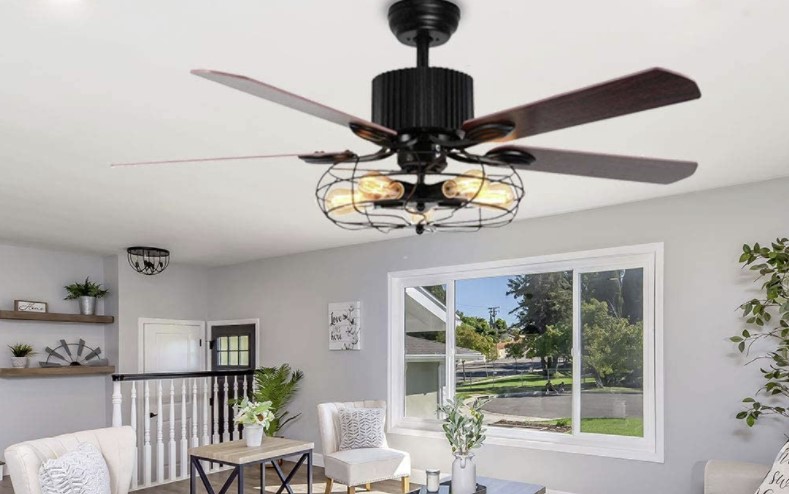A ceiling fan with a light kit kills two birds with one stone. The fan part will keep you cool during a hot day, while the light illuminates your room during the night.
However, from time to time, the LED lights on the fixtures tend to stop working suddenly. In some cases, the lights stop functioning altogether, but the blades continue to operate. So, what causes this issue and how can you fix the light kit on a ceiling fan?

Contents
Why ceiling fan lights may fail to work
The primary reason why ceiling fan lights may stop working is due to loose wire connections.
A ceiling fan with light generates heat, while in operation, which causes expansion and contraction of electrical wires. Eventually, wires may loosen and cause the lights to stop working.
Another reason that can cause fan lights to malfunction is a faulty or damaged lighting kit. If you’ve just bought the fan, then you should take it back for a replacement.
Ceiling fan lights are not working – How to troubleshoot
Use any of these methods to troubleshoot your ceiling fan and point out exactly what is wrong with it.
While you can attempt some of these fixes by yourself, make sure to contact a professional where necessary.
1. Check to ensure the LED bulbs are working
The lights are not working because the bulb may have burned out. If your unit has more than one bulb, it will work even if one is faulty. But if it has one, it will not work if it has gone bad. In that case, replace the burned-out LED bulb.
Also, ensure that you have screwed the bulb in its socket well. Depending on the year of manufacture of your unit, it may not work well with an LED bulb. In that case, check to ensure that your bulbs have the recommended wattage.
2. Check wire connections in the light kit
The wire connections are sometimes not the primary source of the light not working, especially if the blades are spinning.
But if that is not the case, you will need to inspect the wires to ensure there are no charred or burn marks.
- Start by unscrewing the retaining screws that connect the unit to the mounting bracket.
- You will see black and blue wires twisted to the red wire from the power source. The colours may be different depending on your ceiling fan.
- Ensure the wires connect properly and that you do not have a loose wire connector. In most ceiling fans, the red wire from an electrical box attaches to the blue wire from the light kit.
- If you are using one switch, the black wire from the ceiling fan and the light kit wire should attach with the black wire from the electrical box.
Also, ensure all connections are correct, and connectors are not overly tight.
3. Inspect the sockets for any burned marks
When ceiling fan lights won’t work, inspecting the light bulb could give you insights on whether you are dealing with a burned or charred socket.
This is usually as a result of an electric short in the wiring. The best fix is to install a new socket in the light kit if it has burned out.
For a charred socket, you will have to replace the entire kit. Also, check to ensure that the light bulb is not too tight because it can cause the socket to stop working.
4. Reset the ceiling fan remote control
Many homeowners use a remote control to opera the fan lights. The device uses batteries to power up. Check to ensure that the batteries are not dead. Otherwise, you will have to buy new ones.
If the lights do not work despite having new batteries, consider resetting the remote. Here is how:
- Turn off the fan using the remote.
- Wait for about 20 seconds before turning the fan back on.
- Hold down the power button for about 10 seconds.
Resetting the remote control helps to restore its functions, including operating the lights. If this doesn’t work, get a replacement remote.
Conclusion
If LED bulbs are not working in a ceiling fan, consider replacing them and checking whether they are of the right wattage. Also, check to ensure that the bulbs are not overly tight.
In some cases, the bulbs may stop functioning because of burned or charred sockets. The best fix is to replace the entire light kit or install a new socket.
